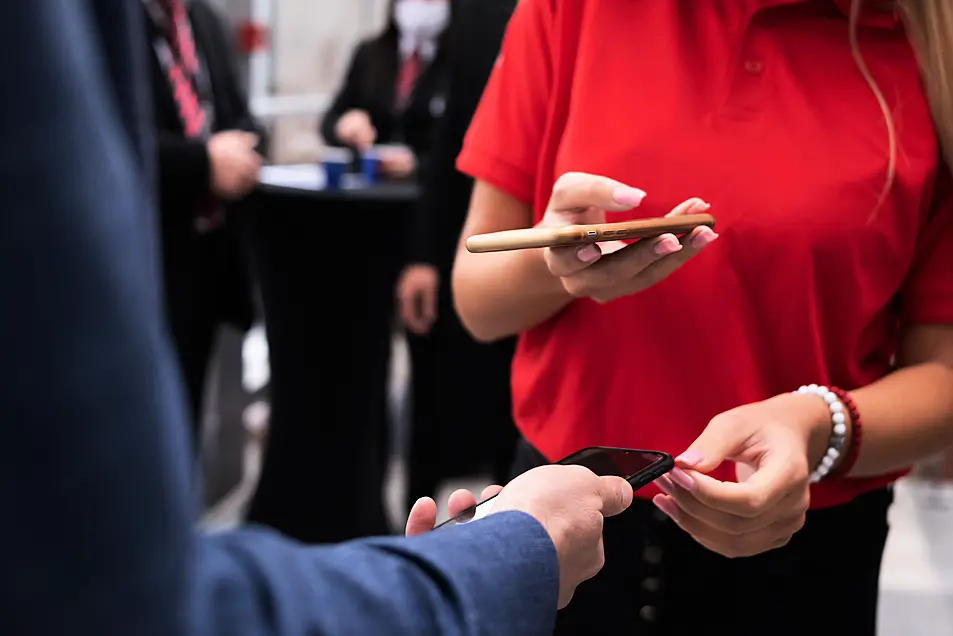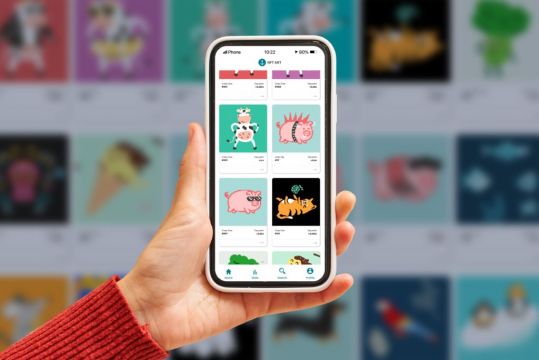The world of cryptocurrency can be confusing and overwhelming, and not everyone thinks it’s ‘for them’ – particularly if you’re not a Silicon Valley tech genius.
However, cryptocurrency doesn’t seem to be going anywhere, and you might have been hearing more and more about NFTs (non-fungible tokens). But what actually are NFTs? How do they relate to cryptocurrency? And why should you pay attention to them?
Josh Sandhu is the co-founder of Quantus Gallery (quantusgallery.com), an NFT art gallery in London, and he’s here to answer all your pressing questions…
What are NFTs?
Non-Fungible Token. NFT.
What is "fungible"?
Definition:
- "replaceable by another identical item; mutually interchangeable." #Web3#NFT#Blockchain pic.twitter.com/Qvu95nZuqn— Meta Legends (@metalegendsnft) March 19, 2022
Advertisement
“An NFT is a digital certification of authenticity and ownership,” explains Sandhu. “In effect, an NFT is a vehicle – attached to it is a bit of media. That can be anything – a bit of art, music, it could even be a ticket to a concert.”
It can get confusing because it’s not a physical object – instead, Sandhu says: “Technically it is cryptocurrency, it’s a token.” Many of the most popular NFTs are run on Ethereum – a blockchain.
“Blockchain is sort of a digital ledger, it’s a database that can’t be altered,” explains Sandhu. The most common use for blockchain is for cryptocurrency, it records any transactions that are made, like a decentralised bank system no one can mess with.
The ‘non-fungible’ part means it’s unique – when you own an NFT, you have the only one.
How are they mostly used?
Beeple | The First 5000 Days is open for bidding until11 March at 10am EST! 💥
.#beeple #digitalart #beeplepeople #digitalartist #artist #art #thefirst5000days #nft #blockchainart #blockchain @beeple_crap pic.twitter.com/o7MfsPyxTfAdvertisement— Christie's (@ChristiesInc) February 26, 2021
“The most obvious use case is digital art and collectibles,” says Sandhu. This is probably where you’ve come across NFTs in the news – highbrow auction houses like Sotheby’s and Christie’s have started selling NFTs – in March 2021, Christie’s sold a piece called Everydays: The First 5000 Days by Beeple for $69,346,250 (£58 million).
Sandhu calls this phenomenon “really interesting, because it is the first time digital artists could get in on the art market”.
If you’re struggling to visualise how this all works, you’re not alone. “If we’re talking about the art market, the easiest way to liken it is to those certificates of authenticity that come with a tangible piece of art you purchase, where it has the provenance of it, and it’s authenticated by the artist,” says Sandhu. “You’re not going to buy a Banksy without being 100% sure it’s a Banksy piece, right? So that’s one of the functions of an NFT.”
.@beeple 's 'The First 5000 Days', the 1st purely digital NFT based artwork offered by a major auction house has sold for $69,346,250, positioning him among the top three most valuable living artists. Major Thanks to @beeple + @makersplaceco. More details to be released shortly
— Christie's (@ChristiesInc) March 11, 2021
Memes have had the NFT treatment – such as the Disaster Girl or Overly Attached Girlfriend memes, both of which have sold for hefty prices. Twitter founder Jack Dorsey even sold his first tweet (the illuminating: ‘just setting up my twttr’) for an eyewatering $2,915,835.47 (£2 million).
Sandhu says: “It’s all digital assets – this is the thing people struggle to wrap their heads around. But it’s allowed digital artists to enter the art market, because it’s allowed scarcity to enter digital assets.”
Are there any concerns with NFTs?
🔥👉You can take a picture of the Mona Lisa but it doesn’t mean you own it.
The same is true for a NFT.
If you screenshot a NFT, you own a copy, but not the real thing.— Skurpy (@SkurpySocial) March 21, 2022
“You hear common objections, like: ‘Can’t I just print screen, or right-click and save one of those JPEGs?’ It’s true – you can,” says Sandhu. “But the whole purpose of the NFT is it proves you own something.
“Let’s give an example: Banksy did an NFT of one of his works. There could be myriads and myriads of copies, but only one of them is going to have this certificate of ownership – by means of the NFT.”
Another issue often raised is how quickly the industry is expanding. Some NFTs are getting sold for extraordinary prices, and there are worries it’s not sustainable, and the NFT bubble might potentially burst.
How do NFTs affect regular people?
NFTs might make headlines when they’re sold for outrageous prices, but that doesn’t mean they’re only for billionaires and celebrities.
“Especially since the pandemic, more and more things have moved into the digital realm,” Sandhu muses. “That was always an inevitability. That’s not to say it’s going to take over everything, but it’s getting more and more widely adopted” – citing things like virtual reality and the metaverse – “it’s part of this whole ecosystem that’s being built”.

He suggests people should pay particular attention to blockchain, because it could become the underlying technology for a lot of things – “whether people realise it or not”.
He says: “So as far as investing into art or collecting NFTs or anything like that, it’s just another vehicle. Some people prefer tangible assets” – but others might be looking to diversify their investment portfolio, or just like collecting digital art.
It might be dominating the news, but Sandhu still says it’s “quite a small market, relatively speaking”. But the potential uses are almost endless. “Perhaps in the very near future when you go see a football game or go to a concert, you’ll have a digital ticket on your phone – it’s an NFT, but you don’t know. It’s one of those things where there are going to be all sorts of use cases for it – we’re still very much at the beginning.”
But if you still don’t get NFTs and blockchain, don’t worry too much. “If you ask the average person how the financial system works and get them to explain it in detail, or some other investment-related things, or how markets work – they would struggle to do so,” suggests Sandhu. “It’s kind of the same thing – it’s really not needed [to know how it works], it’s one of those things that just is.”







